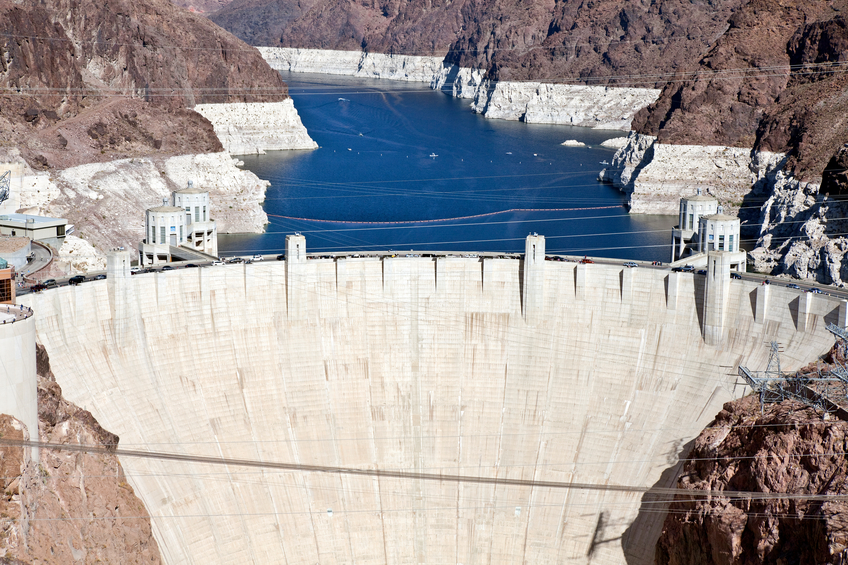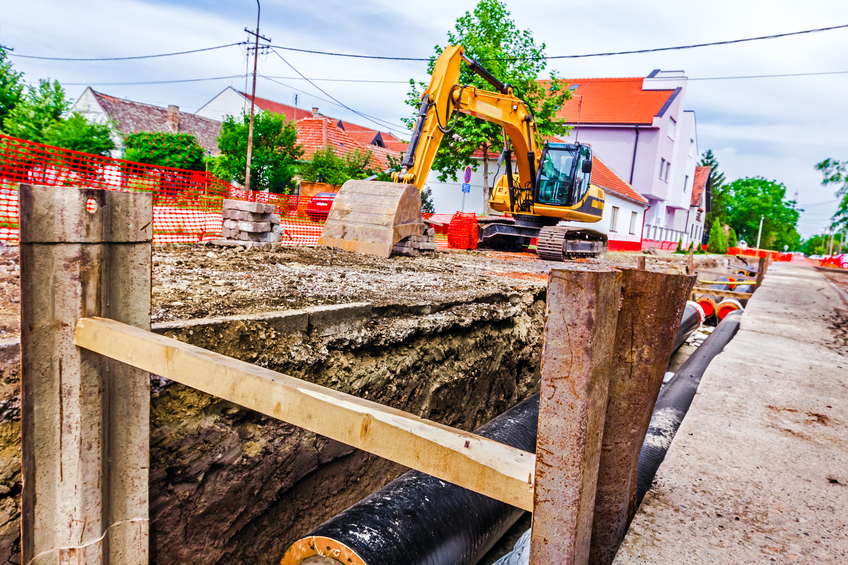Alaska Geotechnical 24 PDH Discount Package 2
Courses in this Package
Rock Foundations (G09-001)
Design and Construction of Earth and Rock-Fill Dams (G07-001)
Selecting and Accommodating Inflow Design Floods for Dams (C04-055)
Tunnel Operations, Maintenance, Inspection, and Evaluation Manual: Evaluation (C02-073)
Trenching and Excavation Safety (C02-072)

This online engineering PDH course presents the guidelines for the design of rock foundations supporting various types of structures and embankments. These guidelines include information on foundation exploration and testing procedures, load test methods, analysis techniques, design criteria and procedures, and construction considerations. These guidelines provide a minimum standard to be used for planning a satisfactory rock foundation design for a typical situation.
This 9 PDH online course is applicable to geotechnical and structural engineers, geologists, as well as design and construction personnel involved in the design of rock foundations.
This PE continuing education course is intended to provide you with the following specific knowledge and skills:
- Foundation design considerations and factor of safety
- Site investigation techniques and procedures
- Rock mass characterization and classification schemes
- Foundation deformation and settlement analysis, estimation and treatment
- Foundation bearing capacity analysis, estimation and treatment
- Sliding stability assessment of gravity structures and slopes cut into rock mass
- Design of rock anchorage systems
- Selection of appropriate geotechnical instrumentation.
- Construction considerations of foundations and cut slopes in rock masses
- Recognizing and treating special conditions
In this professional engineering CEU course, you need to review the US Corps of Engineers Publication EM 1110-1-2908, "Rock Foundations"
Upon successful completion of the quiz, print your Certificate of Completion instantly. (Note: if you are paying by check or money order, you will be able to print it after we receive your payment.) For your convenience, we will also email it to you. Please note that you can log in to your account at any time to access and print your Certificate of Completion.

This online engineering PDH course presents the fundamental principles underlying the design, construction, performance monitoring and modifications of earth and rock-fill dams. The design and construction of earth and rock-fill dams are complex because of the nature of the varying foundation conditions and range of properties of the materials available for use in the embankment.
The successful design, construction, and operation of a reservoir project over the full range of loading require a comprehensive site characterization, a detailed design of each feature, construction supervision, measurement and monitoring of the performance, and the continuous evaluation of the project features during operation.
This 7 PDH online course is applicable to geotechnical and structural engineers, geologists, design and construction personnel who are involved with the design and construction of earth and rock-fill dams.
This PE continuing education course is intended to provide you with the following specific knowledge and skills:
- Geological and subsurface explorations
- General design considerations and performance parameters
- Foundation and abutment preparation
- Seepage control methods
- Design of embankments and appurtenant structures
- General construction considerations
- Types of instrumentation
In this professional engineering CEU course, you need to review the US Corps of Engineers Publication EM 1110-2-2300, "General Design and Construction Considerations for Earth and Rock-Fill Dams".
Upon successful completion of the quiz, print your Certificate of Completion instantly. (Note: if you are paying by check or money order, you will be able to print it after we receive your payment.) For your convenience, we will also email it to you. Please note that you can log in to your account at any time to access and print your Certificate of Completion.

This online engineering PDH provides basic guidelines for selecting and accommodating inflow design floods for dams based on current and accepted practices.
Appropriate selection of the Inflow Design Flood is the first step in evaluating and designing a dam to address hydrologic potential failure modes and reduce risks to the public. Existing guidelines of most state and federal agencies for evaluating the hydrologic safety of dams were written in the late 1970s. Since that time, significant technological and analytical advances have led to better watershed and rainfall information, improvements in the analysis of extreme floods, greater sophistication in means to quantify incremental dam failure consequences, and tools for evaluating hydrologic events in a risk-based context.
This 4 PDH online course is applicable to geotechnical and civil engineers, dam owners or regulators, and other technical personnel interested in gaining a better knowledge on inflow design floods for dams.
This PE continuing education course is intended to provide you with the following specific knowledge and skills:
- Learning about the dam classification system
- Understanding the guidelines for selecting the inflow design flood
- Learning about spillway characteristics (mainly controlled versus uncontrolled)
- Familiarizing with routing the inflow design flood
- Familiarizing with freeboard requirements
- Defining terminology and acronyms associated with the overall scope of the course
Upon successful completion of the quiz, print your Certificate of Completion instantly. (Note: if you are paying by check or money order, you will be able to print it after we receive your payment.) For your convenience, we will also email it to you. Please note that you can log in to your account at any time to access and print your Certificate of Completion.

This engineering online PDH course will provide an overview on the evaluation of tunnel systems and the associated components. The components explored in this chapter include the typical personnel involved, supplemental inspection and testing methods, risk-based assessments, priority classification, and basic cost estimating. Information is also provided on load rating.
Evaluations are normally performed after the inspection data is received. Sound engineering judgment is used to evaluate the consequences of tunnel system or component failure in terms of overall safety, service level, and costs. In some instances, supplementary inspections and testing may be needed where data is lacking. Risk assessment techniques should include strategies for deploying, operating, maintaining, upgrading, and disposing of tunnel system components in a cost-effective manner.
This 2 PDH online course is applicable to civil and structural engineers, as well as design and construction personnel involved with the evaluation process of tunnel systems.
This PE continuing education course is intended to provide you with the following specific knowledge and skills:
- Understanding the evaluation criteria and methods of tunnel systems
- Identifying the typical personnel involved in tunnel evaluation procedures
- Familiarization with different testing methods
- Understanding risk-based assessments
- Recognizing priority classification
- Understanding the basics of cost estimating
Upon successful completion of the quiz, print your Certificate of Completion instantly. (Note: if you are paying by check or money order, you will be able to print it after we receive your payment.) For your convenience, we will also email it to you. Please note that you can log in to your account at any time to access and print your Certificate of Completion.

This online engineering PDH course provides guidance on the requirements for excavation and trenching operations. This course describes safe work practices that can protect workers from cave-ins and other hazards.
Trenching and excavation work presents serious hazards to all workers involved. Cave-ins pose the greatest risk and are more likely than some other excavation-related incidents to result in worker fatalities. One cubic yard of soil can weigh as much as a car. An unprotected trench can be an early grave. Employers must ensure that workers enter trenches only after adequate protections are in place to address cave-in hazards. Other potential hazards associated with trenching work include falling loads, hazardous atmospheres and hazards from mobile equipment. Following the requirements of OSHA Excavation standards will prevent or greatly reduce the risk of cave-ins and other excavation-related incidents.
This 2 PDH online course is intended for employers/business owners, engineers, managers, construction workers and any other personnel working on construction projects involving trenching and excavation safety.
This PE continuing education course is intended to provide you with the following specific knowledge and skills:
- Understanding the different risks and dangers of trenching and excavation operations
- Understanding the OSHA Excavation standards and how they protect workers
- Pre-planning excavation work
- Learning the basics of protective systems
Upon successful completion of the quiz, print your Certificate of Completion instantly. (Note: if you are paying by check or money order, you will be able to print it after we receive your payment.) For your convenience, we will also email it to you. Please note that you can log in to your account at any time to access and print your Certificate of Completion.